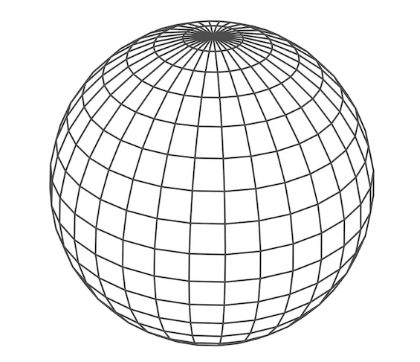Can Spheres Fly?
After seeing all the recent news about flying orbs and spheres, a few colleagues and I spent time looking at the possibilities of how spheres could fly, or at least levitate.
A sphere is absolutely not an effective aerodynamic shape. At subsonic speeds it creates no lift and generates large amounts of drag as the boundary layer separates from the surface once it reaches the maximum diameter.
And at supersonic speeds it forms a strong bow shock wave and acts as a speed brake. The USSR used a spherical shape for its Vostok 1 reentry vehicle for this reason. So aerodynamics is not the answer.
A few months ago, a colleague proposed a hypothesis that a sphere that was built with exotic superconducting materials (some of these include bismuth in case that sounds familiar) could fly using quantum magnetic levitation, also known as the Meissner effect.
When these materials are cooled to or below their critical temperature, they expel magnetic fields. This effect would apply to the Earth’s magnetic field, therefore, by switching sections of the sphere surface ‘on’ to expel the magnetic field and ‘off’ to stop the effect, one could make a sphere levitate and even move in any direction.
The round shape is the perfect shape to achieve such movement, depending on the granularity of the superconductor sections.
We initially dismissed this hypothesis because the Earth’s magnetic field is weak and a 5-10 foot diameter sphere would have no way of generating the needed power.
But our thinking has evolved and we now think this is a viable solution when coupled with another emerging technology, power beaming.
Let’s discuss the Meissner effect and how it would work first.
Assuming the sphere can generate enough cooling power, or that the Earth’s magnetic field can be amplified, a sphere built out of exotic superconducting materials could levitate, stay aloft in winds, and even move in any direction. This could be accomplished by placing the superconducting plates in a grid-like fashion.
The plates would be independent of each other and could be turned ‘on’ and tuned to expel the magnetic field or turned ‘off’ to not expel by an algorithm, depending on what maneuver it was trying to accomplish.
To levitate, the sphere would turn ‘off’ or lower the power of the plates on the top half and turn ‘on’ and adjust the power of the plates on the bottom half to expel the magnetic field. Too much power and the sphere shoots upward or too little and it falls to the ground.
The same applies to staying aloft in high winds. Plates over the surface would power up to expel the magnetic field and push against the wind. Multi-axis movement can also be achieved in this manner by increasing power to some of the plates and lowering or switching off others. With increasing grid granularity, which results in smaller and smaller plates, the maneuvering capability becomes increasingly sharper.
This technology could stop, hover, and accelerate in a different direction, mimicking some of the descriptions of UAP.
What this technology can’t account for is supersonic speed.
Assuming the combination of very high cooling power, an enhanced magnetic field, and a lightning-fast computer to control the superconducting plates, this system can go from hover to high subsonic speeds and stop and turn at 90-degree angles. But crossing the transonic barrier and dealing with a bow shock wave requires a very different type of technology like plasma actuators that we will save for another time.
Let’s now turn to the other problem.
Earth’s magnetic field is very weak, ranging from 0.3 - 0.6 Gauss. A magnet you hang on your fridge door as a strength of 100 Gauss for comparison. To make this work, we would need an extremely cooled superconductor combined with some way to amplify the magnetic field.
This is the original reason we rejected this idea earlier. But that was only until we realized it could be accomplished with power beaming.
Power beaming is defined as a point-to-point transfer of electrical energy by a directed electromagnetic beam. It was the brainchild of Nikola Tesla but only now is finally becoming a reality.
The basics involve a large craft or satellite, let’s call it the mothership, beaming power to smaller dependent vehicles (let’s call them ‘lightcraft’) via electromagnetic beams such as lasers, microwaves, or similar methods.
We have even tested this technology on the Space Force’s X-37B spaceplane. A majority of future drones and satellites will almost certainly be lightcraft that are powered by a mothership of some kind.
If our hypothetical sphere is a lightcraft and has a powerful mothership, then the obstacles start to melt away.
A powerful mothership with advanced technology can certainly beam enough power to our sphere to achieve extreme supercooled temperatures.
And with advanced enough technology, such a mothership could even increase the strength of the magnetic field around the sphere.
So, the concept, while still far-fetched, does not seem impossible anymore.
About The Author
Condorman, who wishes to remain anonymous, is a senior level aerospace engineer who has worked in the defense industry for over 30 years designing advanced technology.


